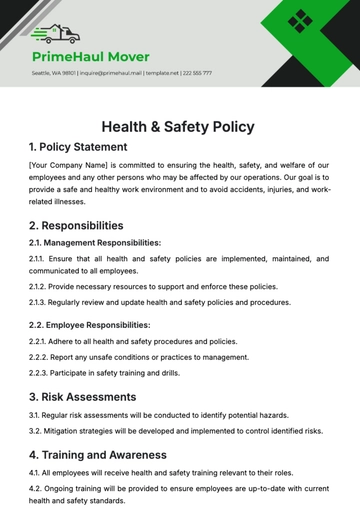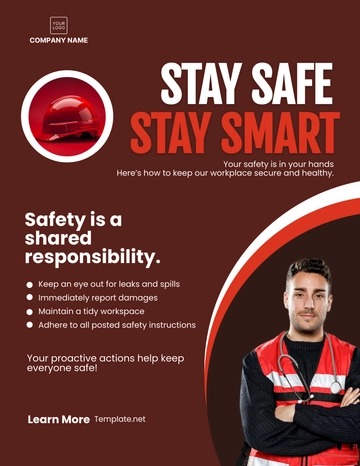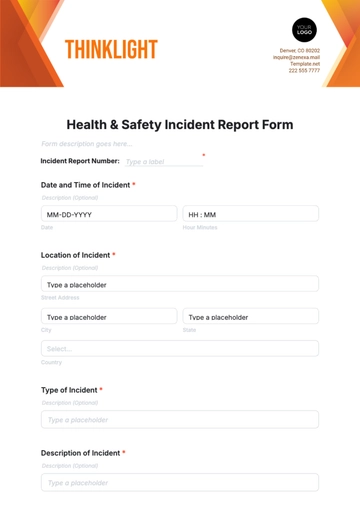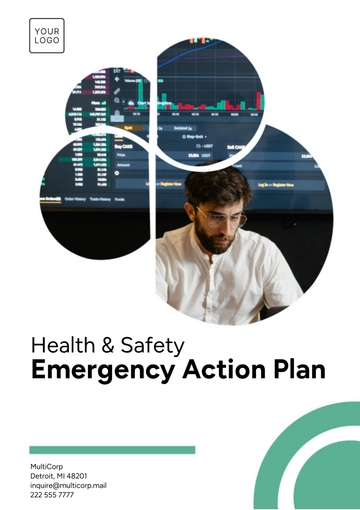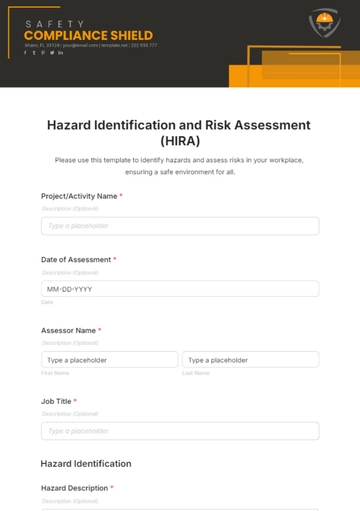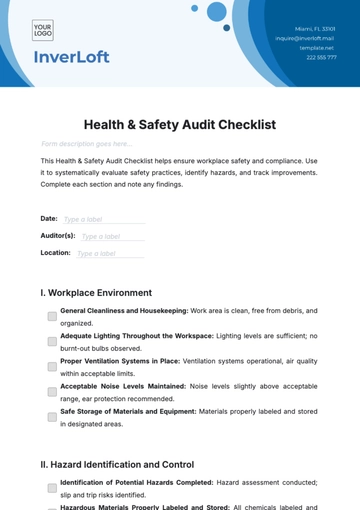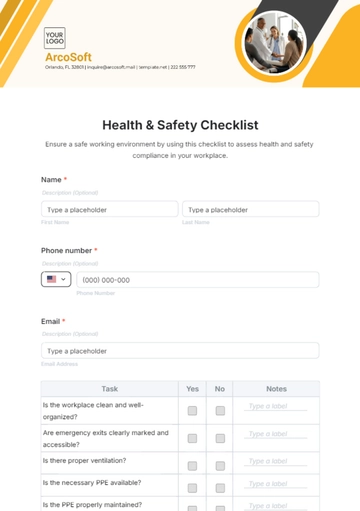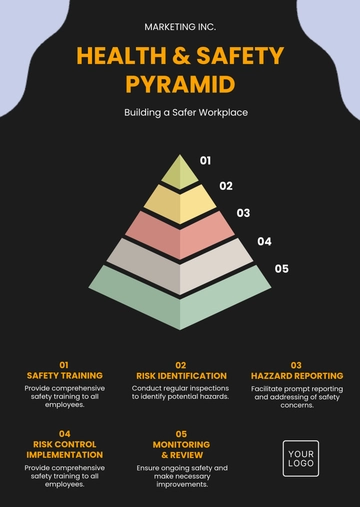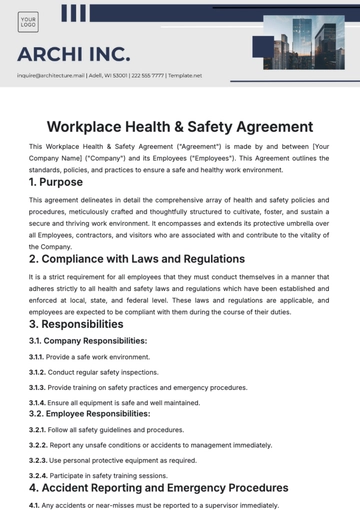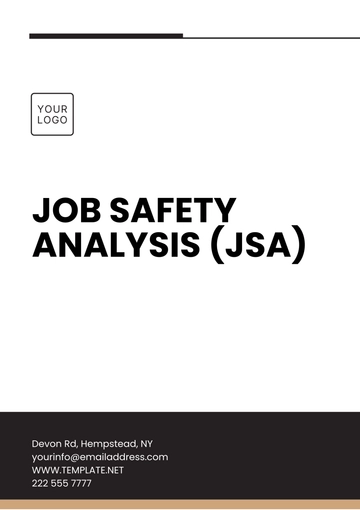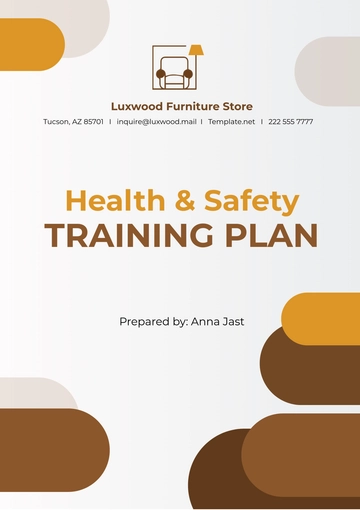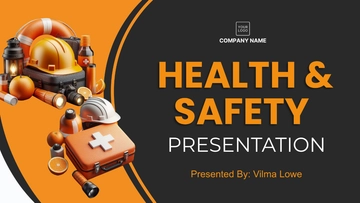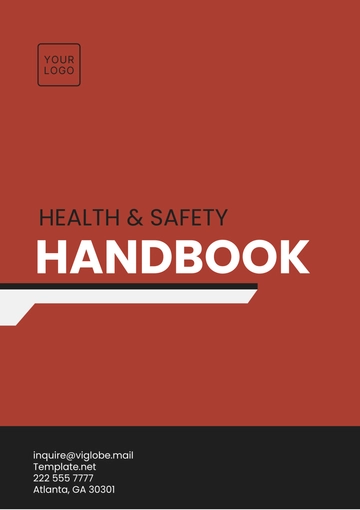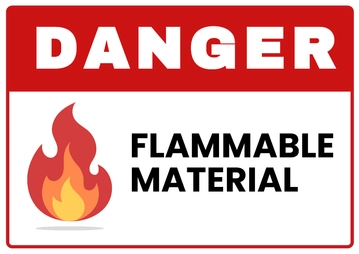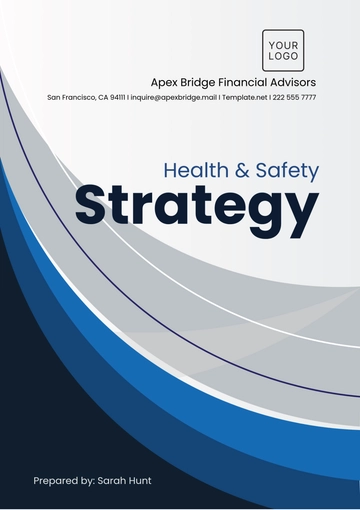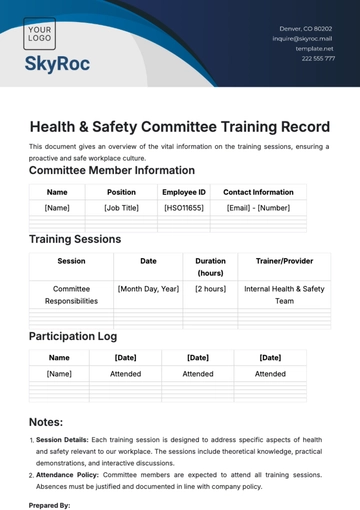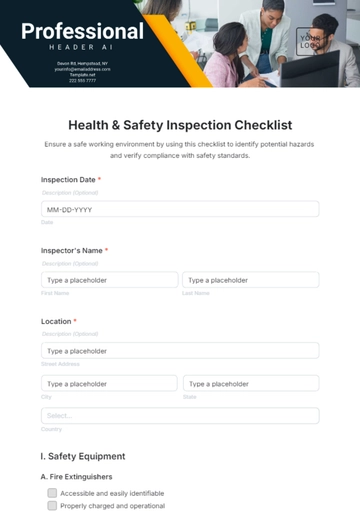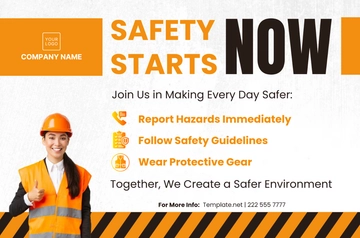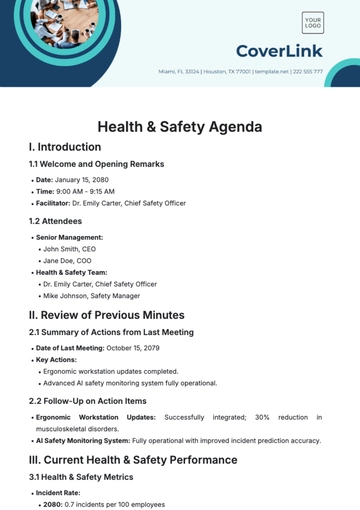Free Health & Safety Case Study on Committee Success
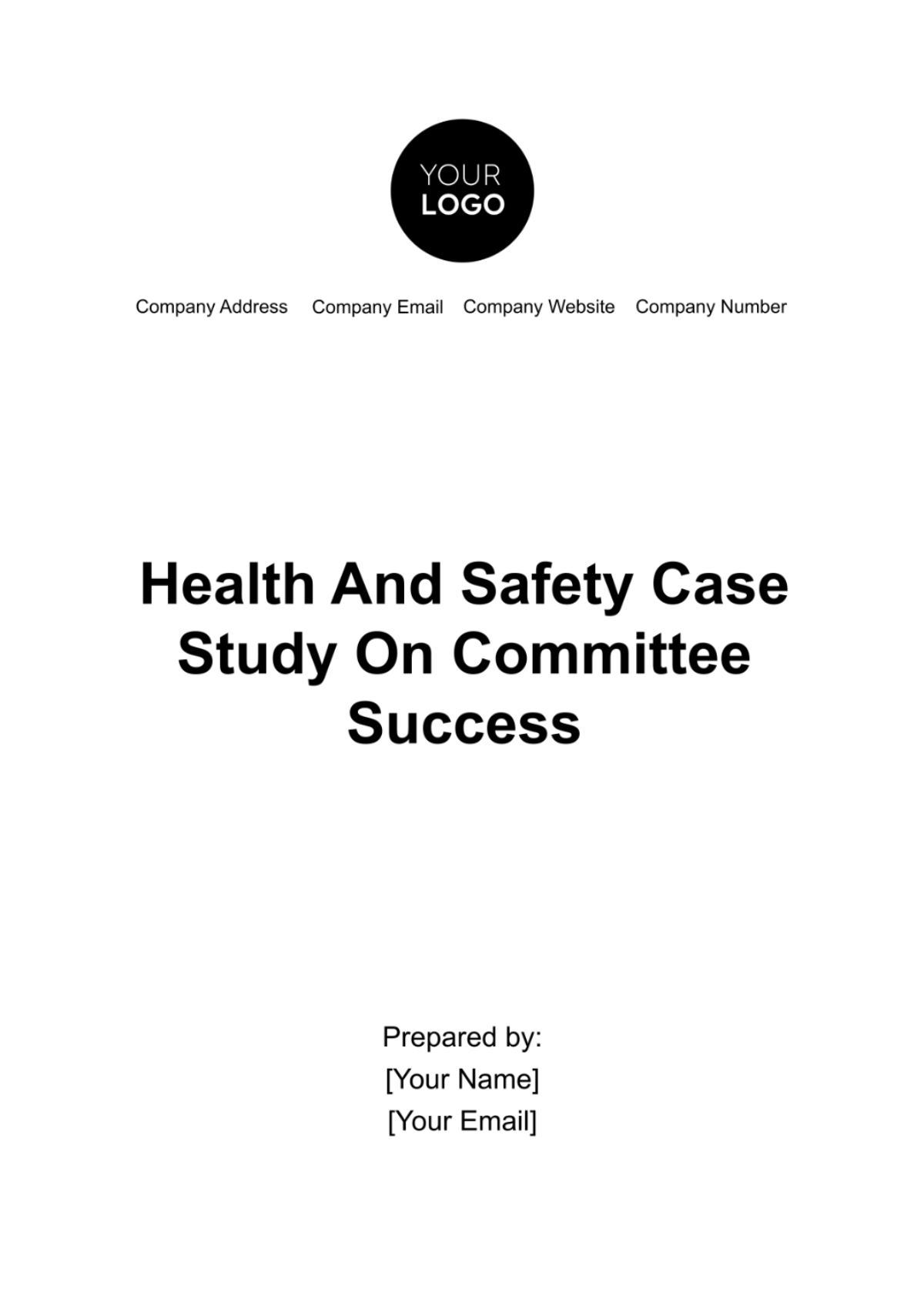
Introduction
A. Background
In response to the growing importance of health and safety within [Your Company Name], the Health and Safety Committee was established in [2050]. This initiative was driven by our unwavering commitment to ensuring the well-being of our employees, clients, and visitors. Over the years, the committee has played a pivotal role in shaping and enhancing our safety standards.
B. Objective
The primary objective of this case study is to provide an in-depth analysis of the successful journey of our Health and Safety Committee. We aim to illustrate how the committee's diligent efforts have contributed significantly to the overall improvement of health and safety practices within our organization. By highlighting the key milestones and achievements, we intend to showcase the positive impact of our safety initiatives.
C. Scope
This case study encompasses various aspects of the Health and Safety Committee's activities and accomplishments. It delves into the formation and composition of the committee, its roles and responsibilities, risk assessment and analysis processes, training and awareness programs, incident reporting and response mechanisms, safety performance metrics, emergency preparedness protocols, the promotion of a robust safety culture, and our partnership with [Your Partner Company Name]. The case study provides a comprehensive overview of our commitment to safety and the collaborative efforts that have contributed to our success.
Committee Formation
A. Formation of the Health and Safety Committee
In [2050], recognizing the critical need for a dedicated approach to health and safety, [Your Company Name] took the proactive step of establishing the Health and Safety Committee. This decision arose from the recognition that safety is not merely a priority but an integral part of our organizational culture.
B. Committee Members
The Health and Safety Committee comprises [25] dedicated individuals representing various departments within our organization. The committee's composition ensures a cross-functional approach to safety, with members from management, operations, and employees' ranks.
C. Roles and Responsibilities
Each member of the committee brings a unique perspective and expertise to the table, and their roles and responsibilities are clearly defined:
Chairperson: Responsible for overseeing the committee's activities, setting the agenda for meetings, and ensuring that safety objectives are met.
Safety Officers: Play a crucial role in conducting safety audits, risk assessments, and ensuring compliance with safety standards.
Employee Representatives: Act as the voice of the workforce, providing valuable input on safety concerns and suggestions.
Training Coordinators: Manage and facilitate safety training programs to equip employees with the knowledge and skills needed to work safely.
Communication Liaison: Ensures effective communication of safety-related information throughout the organization.
Record Keepers: Maintain records of safety meetings, incidents, and training sessions to facilitate data-driven decision-making.
Risk Assessment and Analysis
A. Identification of Hazards
The Health and Safety Committee embarked on a systematic journey to identify and assess potential hazards within [Your Company Name]. Through rigorous workplace inspections, incident investigations, and employee feedback, the committee compiled a comprehensive list of hazards across various departments and job roles. These hazards ranged from physical risks, such as machinery operation, to ergonomic concerns and chemical exposures.
B. Risk Assessment Methodology
To prioritize and address these hazards, the committee employed a robust risk assessment methodology. We utilized a combination of qualitative and quantitative risk assessment techniques, considering factors such as the severity of potential incidents and the likelihood of their occurrence. This approach allowed us to categorize hazards and allocate resources effectively.
C. Risk Mitigation Strategies
With a clear understanding of the identified hazards, the committee developed and implemented a range of control measures to mitigate risks. These measures encompassed engineering controls, administrative controls, and personal protective equipment (PPE). For instance, engineering controls were introduced to enhance machine safety, while administrative controls included updated standard operating procedures and safety protocols. The provision of suitable PPE further safeguarded employees from specific hazards.
D. Monitoring and Review
The committee recognized the dynamic nature of workplace hazards. Therefore, ongoing monitoring and review became integral components of our safety culture. Regular safety audits, incident trend analysis, and feedback mechanisms were established to ensure that control measures remained effective and responsive to evolving risks. Any changes in processes or equipment were subject to rigorous safety assessments, fostering a proactive approach to hazard management.
Training and Awareness
A. Training Needs Analysis
The Health and Safety Committee conducted a comprehensive training needs analysis to identify gaps in employee knowledge and skills related to safety. Through surveys, assessments, and consultation with department heads, we pinpointed specific areas requiring attention. These needs encompassed emergency response, hazard recognition, safe work practices, and the proper use of PPE.
B. Training Programs
Based on the identified training needs, the committee developed a suite of tailored training programs. These programs were designed to address the specific requirements of different employee groups and job roles within [Your Company Name]. Training modules covered a wide range of topics, including:
Emergency Response Training: Equipped employees with the skills to respond effectively to various emergency scenarios, such as fire, chemical spills, and medical emergencies.
Hazard Recognition: Educated employees on how to identify and report hazards in their workplace, fostering a proactive safety culture.
Safe Work Practices: Ensured that employees understood and followed safe work procedures, reducing the risk of accidents.
PPE Usage and Maintenance: Provided guidance on the proper selection, use, and maintenance of personal protective equipment.
C. Awareness Campaigns
To reinforce safety awareness and promote a culture of vigilance, the committee initiated regular safety awareness campaigns. These campaigns utilized various communication channels, including posters, email newsletters, safety talks, and safety bulletin boards strategically placed throughout the workplace. The campaigns featured real-life examples, success stories, and safety tips to engage and educate employees.
D. Evaluation of Training Effectiveness
To gauge the effectiveness of our training programs, the committee established rigorous evaluation mechanisms. Post-training assessments, quizzes, and surveys allowed us to measure knowledge retention and gather feedback from participants. This data was then used to continuously improve our training materials and delivery methods. Additionally, periodic audits of workplace practices helped ensure that employees were applying the knowledge and skills gained from training in their day-to-day activities.
Incident Reporting and Response
A. Reporting Procedures
The Health and Safety Committee established clear and streamlined incident reporting procedures to ensure the timely reporting of safety-related incidents. Employees were encouraged to report all incidents, regardless of their severity, through a designated reporting system. This system facilitated the collection of crucial data for analysis and continuous improvement.
B. Incident Investigation
In the event of an incident, the committee initiated thorough incident investigations. These investigations followed a structured approach, including:
Immediate response to the scene to ensure the safety of all involved parties.
Preservation of evidence, such as photographs, witness statements, and physical evidence.
Root cause analysis to identify the underlying factors contributing to the incident.
Development of corrective and preventive action plans to address identified deficiencies.
The goal of incident investigations was not just to determine blame but to understand the systemic issues that needed correction.
C. Corrective and Preventive Actions
Once the root causes were identified, the committee worked diligently to implement corrective and preventive actions (CAPAs). These actions were designed to rectify immediate issues and prevent similar incidents from occurring in the future. Timelines were established for the completion of CAPAs, and responsible parties were assigned to oversee their execution.
D. Continuous Improvement
The Health and Safety Committee viewed incidents as learning opportunities. Lessons learned from incident investigations were shared with employees, allowing for greater awareness and understanding of potential risks. Additionally, trends and patterns in incident data were analyzed to identify broader safety improvement initiatives. The commitment to continuous improvement in response to incidents became a cornerstone of our safety culture.
Safety Performance Metrics
A. Key Performance Indicators (KPIs)
To measure the effectiveness of our safety programs and initiatives, the committee established a set of key performance indicators (KPIs). These KPIs included:
Incident Rates: Tracking the number of recordable incidents, lost-time incidents, and near-miss incidents.
Near-Miss Reporting: Encouraging employees to report near-miss incidents, as these often serve as early warning signs of potential accidents.
Safety Compliance Metrics: Monitoring the adherence to safety policies, procedures, and regulations.
Training Completion Rates: Measuring the percentage of employees who completed required safety training.
B. Data Collection and Analysis
Accurate data collection and analysis were fundamental to tracking progress against our KPIs. The committee implemented a robust data management system to record incident details, near-miss reports, training records, and compliance data. This system facilitated real-time reporting and data retrieval.
C. Quarterly Performance Reports
The committee compiled quarterly safety performance reports, summarizing the KPIs and data analysis. These reports were disseminated to all levels of the organization, from front-line employees to senior management. Transparency in reporting allowed for a shared understanding of safety performance and fostered a sense of collective responsibility for safety.
D. Performance Improvement Initiatives
Based on the findings from data analysis and the quarterly reports, the committee
initiated performance improvement initiatives. These initiatives targeted areas where safety performance fell short of established targets. Whether through enhanced training, process modifications, or equipment upgrades, these initiatives were evidence-based and designed to drive continuous improvement in safety outcomes. The commitment to data-driven decision-making underpinned our efforts to maintain and elevate our safety standards.
Emergency Preparedness
A. Emergency Response Plan
The Health and Safety Committee developed a robust and comprehensive Emergency Response Plan (ERP) to address various emergency scenarios that could potentially occur within [Your Company Name]. The ERP outlined detailed procedures for responding to incidents such as fires, chemical spills, medical emergencies, natural disasters, and more. Key elements of the ERP included:
Evacuation Plans: Clearly defined evacuation routes, assembly areas, and procedures for personnel accountability.
Emergency Contact Information: A list of emergency contacts, including internal and external resources.
Communication Protocols: Guidelines for communicating with emergency services, employees, and other stakeholders.
Emergency Equipment: The location and proper use of emergency equipment such as fire extinguishers, first aid kits, and safety showers.
Training and Drills: A schedule for emergency response training and regular mock drills to ensure the readiness of employees and response teams.
B. Mock Drills and Exercises
To validate the effectiveness of the ERP and ensure that employees were well-prepared to respond to emergencies, the committee conducted regular mock drills and exercises. These drills simulated various emergency scenarios, allowing employees to practice their roles and responsibilities in a controlled environment. Mock drills also facilitated continuous improvement of the ERP by identifying areas that required refinement.
C. Communication and Evacuation
Effective communication and evacuation procedures were a central focus of emergency preparedness. The committee established clear lines of communication, both within the organization and with external emergency services. This ensured that critical information could be disseminated rapidly during an emergency. Evacuation plans were regularly reviewed and updated to accommodate changes in the workplace layout and personnel.
D. Lessons Learned
Following each mock drill and real-life emergency incident, the committee conducted a thorough debriefing to capture lessons learned. These lessons were then integrated into the ERP, refining procedures and enhancing response capabilities. The process of continuous learning and improvement contributed to the organization's resilience in the face of emergencies.
Health and Safety Culture
A. Promoting Safety Culture
The Health and Safety Committee played a pivotal role in promoting a culture of safety within [Your Company Name]. This culture was cultivated by fostering a shared commitment to safety at all levels of the organization. Key elements of promoting a safety culture included:
Leadership Commitment: Demonstrated commitment to safety by senior management, setting the tone for the entire organization.
Employee Involvement: Encouraged active participation from employees in safety initiatives, including reporting hazards and suggesting improvements.
Open Communication: Established channels for employees to raise safety concerns and provide feedback without fear of reprisal.
Safety Committees: Beyond the Health and Safety Committee, smaller safety committees were formed in various departments, ensuring that safety was a local priority.
B. Employee Engagement
Engaging employees in safety initiatives was fundamental to our success. Employees were encouraged to take ownership of their safety and the safety of their colleagues. Regular safety meetings and toolbox talks provided opportunities for employees to discuss safety concerns and share their insights. Employees were recognized and rewarded for their contributions to safety, creating a positive feedback loop that reinforced safe behaviors.
C. Recognition and Rewards
To motivate and acknowledge individuals and teams for their safety contributions, the committee implemented a recognition program. This program celebrated achievements such as hazard identification, near-miss reporting, and exceptional safety performance. Recognition took various forms, including certificates, awards, and public recognition during company-wide meetings.
D. Feedback Mechanisms
Two-way communication channels were established to facilitate the flow of feedback regarding safety concerns and suggestions. Anonymous reporting options were made available to ensure that employees felt comfortable reporting hazards or unsafe practices. Feedback was regularly reviewed by the Health and Safety Committee, and appropriate actions were taken to address reported issues, fostering trust and transparency within the organization.
Partnership with [Your Partner Company Name]
A. Collaborative Efforts
Our partnership with [Your Partner Company Name] has been instrumental in furthering our commitment to health and safety. Collaborative efforts between our organizations have resulted in a synergy that benefits the safety culture of both entities. These collaborative endeavors encompass:
Joint Safety Committees: The establishment of joint safety committees with representatives from both [Your Company Name] and [Your Partner Company Name] to address shared safety concerns and promote best practices.
Cross-Training: Opportunities for employees from both companies to receive cross-training on safety protocols and procedures, enhancing their safety awareness and skills.
Information Sharing: Regular sharing of safety information, incident reports, and safety initiatives to leverage each other's experiences and knowledge.
B. Sharing Best Practices
The partnership between [Your Company Name] and [Your Partner Company Name] extends to sharing best practices in health and safety. Both organizations have benefited from this exchange of knowledge, resulting in improved safety outcomes. Some of the key best practices shared include:
Effective Hazard Identification: Methods for identifying hazards, conducting risk assessments, and implementing controls effectively.
Training Programs: Insights into developing and delivering impactful safety training programs tailored to the needs of employees.
Incident Management: Strategies for incident reporting, investigation, and the implementation of corrective actions to prevent recurrences.
Emergency Preparedness: Sharing expertise in developing emergency response plans and conducting mock drills.
C. Joint Health and Safety Initiatives
Collaboratively, [Your Company Name] and [Your Partner Company Name] have undertaken several health and safety initiatives aimed at improving safety standards. These initiatives have included:
Safety Campaigns: Joint safety awareness campaigns to raise awareness and reinforce safety practices among employees from both organizations.
Safety Workshops: Hosting safety workshops and seminars, bringing together experts to discuss emerging safety trends and challenges.
Benchmarking: Comparing safety performance metrics and benchmarking against industry standards to identify areas for improvement.
D. Achievements and Milestones
The partnership between [Your Company Name] and [Your Partner Company Name] has not only resulted in safety improvements but also garnered recognition in the industry. Together, we have achieved significant milestones, such as reduced incident rates, improved safety culture, and commendations for our collaborative safety initiatives. These achievements serve as a testament to the value of our partnership in advancing health and safety goals.
Conclusion
The journey of the Health and Safety Committee at [Your Company Name] has been marked by notable achievements and successes. Through a dedicated commitment to safety, rigorous risk assessment and analysis, comprehensive training and awareness programs, effective incident reporting and response mechanisms, and the establishment of key performance metrics, we have significantly enhanced our safety culture and outcomes.
- 100% Customizable, free editor
- Access 1 Million+ Templates, photo’s & graphics
- Download or share as a template
- Click and replace photos, graphics, text, backgrounds
- Resize, crop, AI write & more
- Access advanced editor
Explore successful safety strategies with the Health & Safety Case Study on Committee Success Template from Template.net. This editable and customizable template offers a structured format for documenting and analyzing health and safety committee achievements. Ideal for examining best practices and key outcomes, powered by an intuitive Ai Editor Tool. Gain insights and inspiration now!

